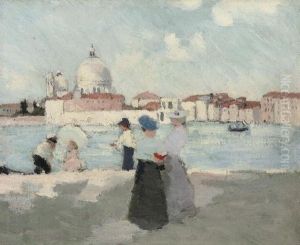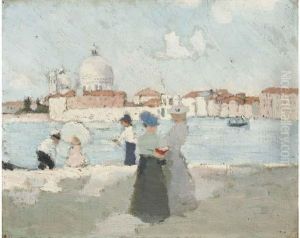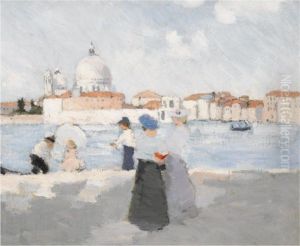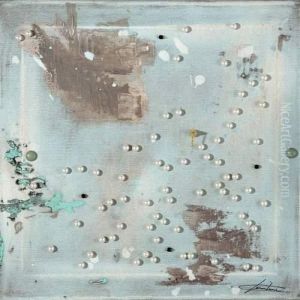Mary Constance Lloyd Paintings
Mary Constance Lloyd was not an artist herself, but she is historically connected to the artistic world through her marriage to Oscar Wilde, one of the most famous writers and playwrights of the Victorian era. Born in 1869, Constance was the daughter of Horace Lloyd, a successful counsel, and his wife Adelaide Atkinson Lloyd. She was raised in an intellectual environment that valued education, and she herself was well-educated, having an interest in women's suffrage and social issues of the time.
Constance met Oscar Wilde at a party in 1881 and they married three years later, in 1884. The couple had two sons, Cyril and Vyvyan. Constance was supportive of Wilde's work and was an integral part of his social circle, which included many prominent artists and writers of the day. Despite her husband's fame, Constance managed to carve out her own identity; she was involved in the dress reform movement, which advocated for more practical and less restrictive clothing for women, and she published a children's book.
Tragically, her life was marred by the scandal that enveloped her husband. In 1895, Wilde was tried and convicted for 'gross indecency' due to his homosexual relationships, a charge that carried with it not only legal ramifications but also social ostracism for Wilde and his family. Constance changed her and her sons' surname to Holland to distance themselves from the scandal.
Her later life was filled with difficulty as she dealt with the fallout from Wilde's conviction and imprisonment. She moved to the continent with her sons, and her marriage to Wilde was effectively over, though they never divorced. Constance passed away in 1898 at the age of 39, following spinal surgery. Her early death has been a subject of speculation, with some suggesting that the surgery was necessitated by syphilis, possibly contracted from her husband, though this claim is not substantiated by concrete evidence.
Although Constance Lloyd was not an artist, her life was intertwined with the artistic circles of the late 19th century, and her story provides insight into the societal norms and challenges of that period, especially for women connected to men of Oscar Wilde's notoriety.



